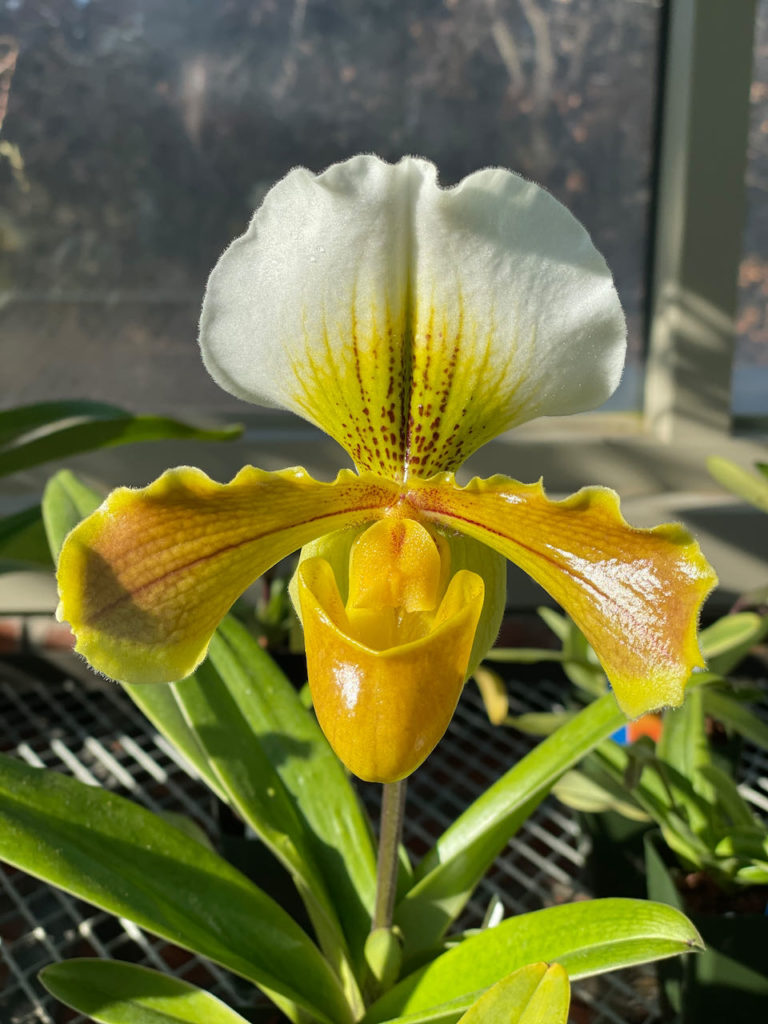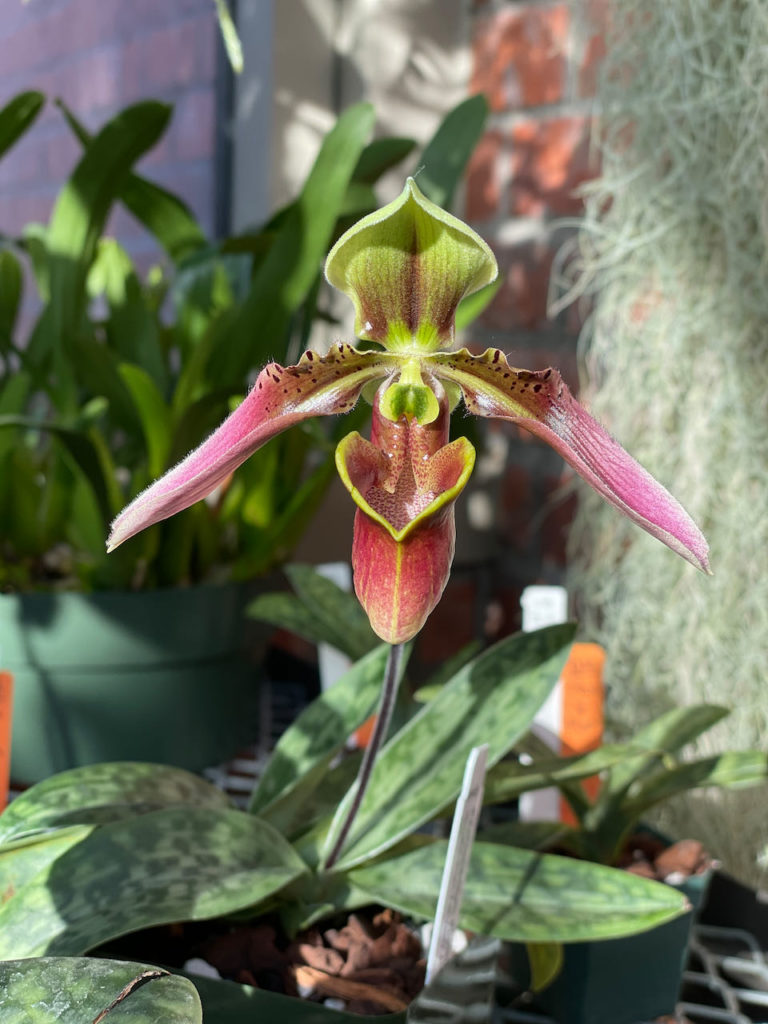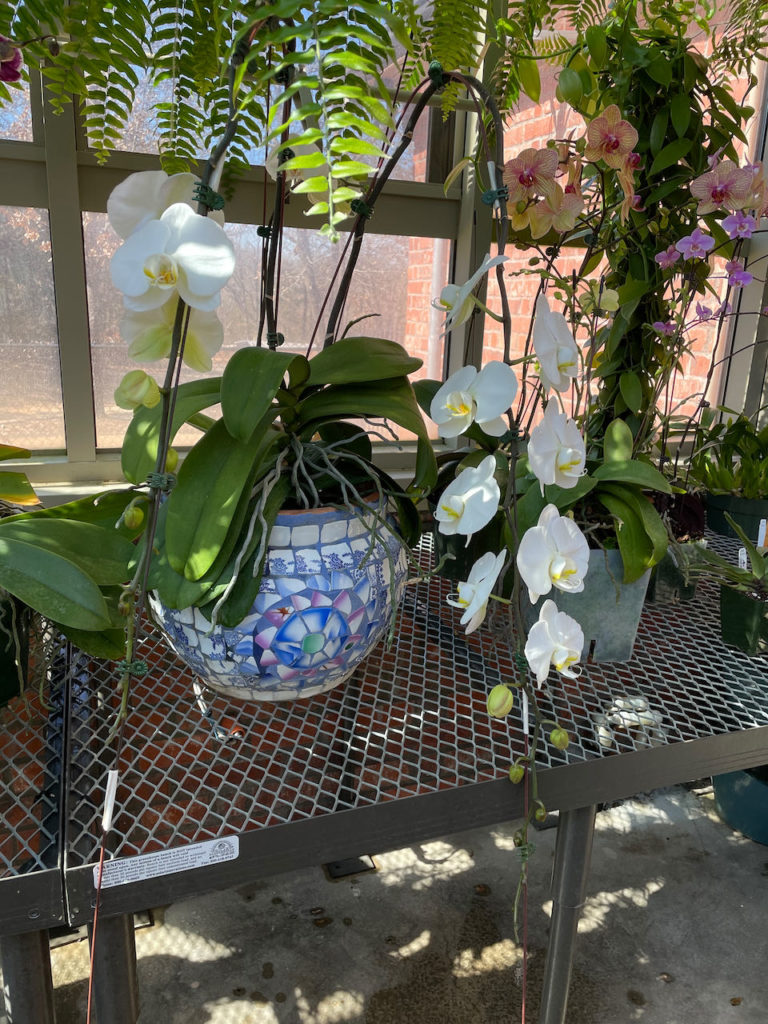OOS members love to bring their beautiful orchids to the monthly meeting’s “show table” and share with others their cultural techniques for growing such specimens. OOS Meetings provide the perfect opportunity to do that!

OOS member Douglas has grown Cymbidium Baltic Dew ‘Freckle Face’ AM/AOS, B/CSA from a small plant he purchased in October 2018 from Santa Barbara Orchid Estate. He grows it in his cool glasshouse (45°F nights/65°F days). This is its first blooming. The plant has two spikes with 15 flowers total, and each flower measures approximately 5.5″ in diameter.

OOS member Douglas has grown Paphiopedilum Valerie Tonkin from a small plant he purchased in December 2019 from Hillsview Gardens. He grows it in his cool glasshouse (45°F nights/65°F days). This is its first blooming. Although his plant is not one of the AOS-awarded cultivars of Valerie Tonkin, Douglas finds it quite beautiful — spectacular in size, color, and substance.

OOS member Douglas has grown Paphiopedilum appletonianum from a small plant he purchased in December 2019 from PaphParadise. The species is native to SW Guangxi, Hainan, and SE Yunnan provinces of China; Cambodia; Laos; Thailand; and Vietnam, where it grows at relatively low elevations of 1000–4000 feet. Thus, he grows the plant in his warm glasshouse (60°F nights/80°F days). This is his plant’s first blooming.

OOS member Douglas observed V3 Phalaenopsis being grown as waterfall cascades at a nursery in Shanghai, China, in 2012, and one of his colleagues at the Shanghai Chenshan Botanical Garden explained to him how it is done. Douglas purchased Phalaenopsis White Dream ‘V3’ AM/AOS from Orchids by Hausermann in February 2019, and he grows it in his warm glasshouse (60°F nights/80°F days). He grew it vegetatively through August 2020, when he allowed it to initiate flower spikes; it developed three. Last August, he allowed it to initiate flower spikes, again; it developed two. As each spike grows, he secures its succulent growth to a cascading 8-gauge wire (about ⅛” diameter), thus encouraging the spike to develop into a waterfall cascade. He has not yet achieved the beautiful, closely spaced shingling that his Chinese colleagues achieve with their V3s, but each year he works to perfect his skill at growing this spectacular form. After this blooming cycle, he plans to grow the plant vegetatively for two years before allowing it to spike again.

OOS member Jana’s Phragmipedium Dominianum MxB is a cross between Phrag caricinum x caudatum, she grows her Phrag inside her house with medium to dappled light, not allowed to dry out and intermediate temps.

OOS member Gabriel grows his Phalaenopsis orchids indoors by the south facing windows and he uses different growing medias. Some orchids grow in 100% sphagnum moss, others in commercial orchid mix mixed with sphagnum moss and some others are growing bare root in glass. He tries to water once a week and controls light exposure by using blinds some times completely open (or no blinds at all) and also using sheer curtains adding or taking layers according to the season.
On the picture:
Phal. Vivien ‘special blue’ with 16 flowers and 5 buds.
Dtps. Black Bird with 8 flowers and 2 buds.
Phal. Ox ‘happy girl’ with 3 flowers
Dtps, white NOID with 4 flowers
